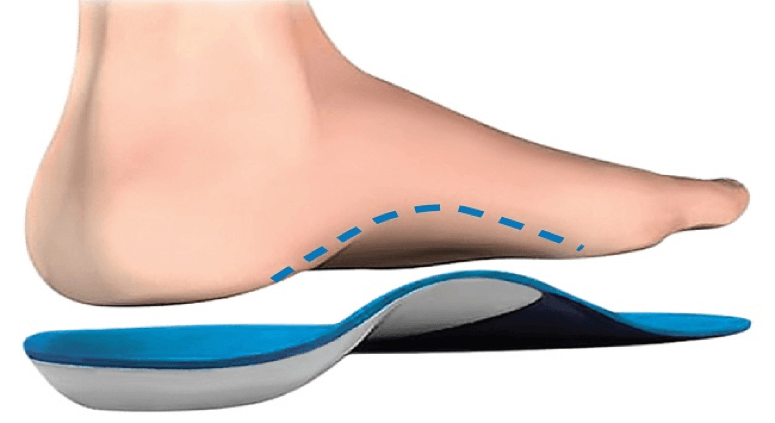Flat Feet: More Than Just Foot Pain
|
 |
|
Flat feet is a common condition where the arches of the feet collapse or fail to develop properly. The arch plays a crucial role in providing support, helping to distribute body weight evenly across the feet. When the arch is compromised, it can lead to foot pain, knee pain, back pain, and other related issues due to the misalignment and strain on the body’s overall structure. |
|
| |
Type of Flat Feet
|
| |
 |
| Flexible Flat Feet |
 |
| This is the most common type of flat feet. When not standing, you can notice the arches in the feet. However, when standing or putting weight on the feet, the arches disappear. This condition may persist from childhood or adolescence and worsen over time due to stretched, torn, or swollen tendons and ligaments. |
|
|
 |
| Rigid Flat Feet |
 |
| In this type, the arch is absent both when standing and when the foot is not bearing weight. It can be congenital or develop due to bone abnormalities, such as abnormal connections between bones in the foot. This type is less common but can be more painful and limiting. |
|
|
| |
Signs and Symptoms of Flat Feet
|
- Foot Pain
- Swelling
- Increased Fatigue
- Shin, Knee, or Back Pain
- Changes in Foot Shape
- Difficulty Finding Comfortable Footwear
|
|
|
| |
The Common Causes of Flat Feet
|
| Genetics |
 |
| Inherited traits can cause flat feet, especially if one or both parents have the condition. |
|
|
| Weak Arches |
 |
| Some people are born with weak arches that don’t fully develop, leading to flat feet. |
|
|
| Injury |
 |
| Foot or ankle injuries can damage tendons, ligaments, or bones, leading to fallen arches. |
|
|
| Aging |
 |
| Over time, the tendons and ligaments that support the arch can weaken or stretch, causing flat feet. |
|
| |
| Obesity |
 |
| Excess weight can put extra stress on the feet, causing the arches to collapse. |
|
|
| Pregnancy |
 |
| Hormonal changes and weight gain during pregnancy can contribute to the development of flat feet. |
|
|
| Health Conditions |
 |
| Conditions such as arthritis, diabetes, and cerebral palsy can lead to flat feet by affecting the muscles, joints, or tendons in the feet. |
|
|
| Improper Footwear |
 |
| Wearing shoes without sufficient arch support can contribute to or worsen flat feet, especially over time. |
|
|
| |
Ways to Manage and Solve Flat Feet Issues
|
| 1. Arch support |
 |
| Custom insoles or proper arch supports footwear can provide relief by redistributing pressure across the foot and supporting the arch. This helps reduce pain, improve alignment, and prevent further strain on the feet. |
|
 |
.jpg) |
| 2. Physical therapy |
 |
| Physical therapy can play a key role in managing flat feet. It helps minimize pain, improve foot flexibility, and strengthen weak muscles. A physical therapist can also correct posture and gait patterns, which is crucial for preventing recurring injuries and enhancing overall foot function. |
|
| 3. Maintain a Healthy Weight |
 |
| Excess weight puts added pressure on your feet, worsening the symptoms of flat feet. Maintaining a healthy weight through a balanced diet and regular exercise can help reduce strain on the feet. |
|
 |
 |
| 4. Surgery |
 |
| In extreme cases, when other treatments don’t work, surgical options like tendon repair or arch reconstruction may be considered. Surgery is typically a last resort for significant pain or disability. |
|
|
| |
Conclusion
|
| Ignoring flat feet, especially in childhood, can lead to long-term health issues. Early intervention is crucial to prevent the condition from progressing and causing more severe problems later in life. If you or your child are experiencing symptoms of flat feet, it’s important to seek advice from a healthcare provider—such as a podiatrist or physical therapist—who can recommend treatment options tailored to your specific needs. |
| |
Prepared By:
Ju Kah Yee
Physiotherapist Supervisor
Trust Physiotherapy Centre (Mount Austin Branch) |
|